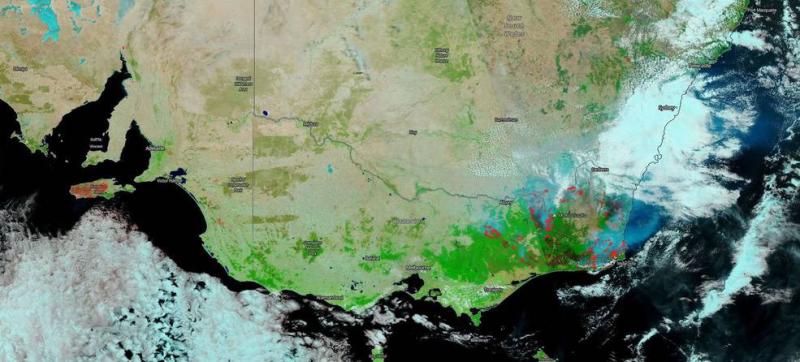Scientists find Australian wildfire smoke has circled the globe



Smoke from the wildfires that are raging across Australia has circumnavigated the globe, NASA announced Tuesday.
Scientists first observed the smoke from Australia making its way across the Pacific Ocean in December, and now say that they have tracked it back to the country's eastern region.
A satellite traced the movement of the smoke and produced an image Monday showing areas in Australia where the smoke had reached its place of origin.
The smoke from Australia has already had a “dramatic impact” on New Zealand, where it is “turning the skies hazy and causing colorful sunrises and sunsets,” NASA said in a statement .
NASA has emphasized that the fires in Australia can cause global damage, saying that “unprecedented conditions that include searing heat combined with historic dryness” have led to an erratic weather phenomenon called “fire clouds.” These clouds allow smoke to travel 10 miles high, and from there, it can disperse thousands of miles away from its origin.
This isn’t the first time smoke from a major fire has traveled across the planet. Mike Flannigan, director of the Canadian Partnership for Wildland Fire Science at the University of Alberta in Canada, said it has happened in fires in the United States and Canada in the past.
"One fire in Alberta caused smoke to travel to the eastern seaboard, and it was so thick, that the street lights came on during the day," Flannigan said. "It went to Europe and caused all sorts of problems in Europe."
The reach of wildfire smoke depends on wind patterns and the intensity of the fires. When smoke is ejected high into the atmosphere, it can be transported by winds all the way around the globe.
“Most of our weather occurs in what we call the troposphere, and that's about 10 kilometers (6 miles), give or take, and closest to the Earth,” Flannigan said. “Once you get into the stratosphere, it's a much more stable environment. So the smoke, ash can get trapped in there for weeks and months and be caught up in these wind patterns and transported around the Earth, going around the Earth again, because they do last weeks to months.”
Flannigan said that this can block some sunlight, which could cause a regional cooling effect. Eventually, gravity will likely cause the smoke and ash to settle lower in the atmosphere, closer to the Earth's surface, but he added that this could cause air quality problems and pose health risks.
Wildfire smoke causes hundreds of thousands of premature deaths on average every year, according to Flannigan. Most of these are in Southeast Asia, due to prolonged exposure. But he warns that episodic exposure is also risky.
“If it becomes constant ... then we do have really significant problems," Flannigan said. "But that's unlikely.”
While NASA states that this phenomenon can affect global atmospheric conditions, the overall impact of Australia’s smoke is still being studied.




Rather shows how world wide a local event can be doesn't it? Kind of like when a local volcano blows its top and blocks out the sun half a world away.
It reminds me of the late 90's when I lived in Dallas. There were huge fires in Central America. I could go out on my apartment balcony at night and smell the smoke.